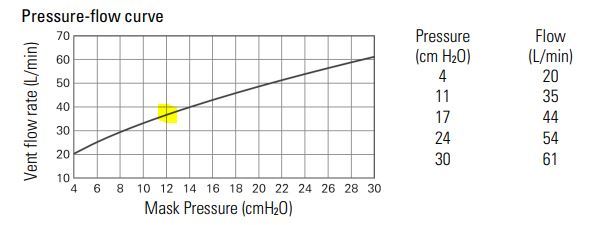ResMed's contact section on their site has always failed for me. I would like to know what changes in the function of an AirSense 10 by switching between nasal and full face mask. (There is also a pillows setting.)
I also wonder if an Evora Full Face mask (a hybrid mask) should use the nasal or full face function. A mask similar to it by ResMed, also a full face hybrid, uses the nasal setting. Fisher Paykel does not know the answer nor does my DME.
Can anyone help me with this question?
Thanks.
I can't give you a specific answer as to what setting you should use. The mask settings compensate for the leakage rate of the designed in mask vent so the reported leak rate is correct. The vent flow is subtracted from the total leakage. So if you do some research on the ResMed masks try to find one that is similar in vent flow to the one you are using. Then use the setting ResMed recommends for that mask. Normally the vent flow is included in the user manual for the mask. Smaller volume masks use less vent flow than large full face type masks. The purpose of the vent flow is to keep CO2 levels from building up too high.
Here is the vent flow specification for the Evora. At 12 cm pressure the vent flow is 35 L/min

Here is the vent flow spec for the ResMed F40 mask which is very similar. At 12 cm pressure the vent flow is about 36 L/min. So almost exactly the same. ResMed recommends the "Pillows" setting for the F40. The Evora is just slightly less flow, so the Pillows setting would also be appropriate for it too.

These diagrams can be found in the user manual for each of these masks.